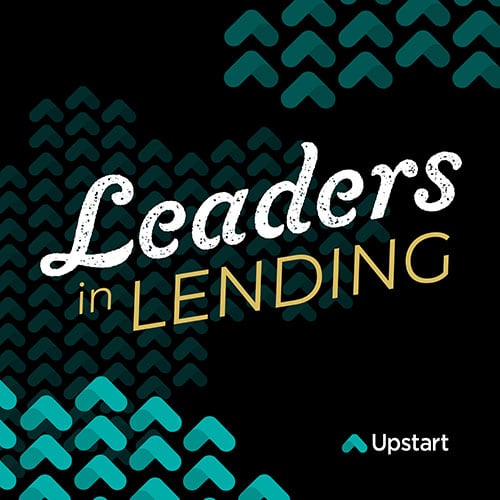Leaders in Lending | Ep. 09
Adapting and Partnering in a Brick & Mortar Industry
Gary Fan, Executive Vice President and Chief Banking Officer at Gateway Community Bank, joins us to talk about the shift to digital and what it means for smaller financial institutions.


GUEST SPEAKER
Gary Fan
Gary is the Executive Vice President and Chief Banking Officer at Gateway Community Bank, a small community bank serving the greater Bay Area in California. Gary is a business leader with nearly 10 years of industry experience. He is focused on driving profitability and delivering tangible, measurable net income impact in his work.

ABOUT
Gateway Bank
Gateway Bank is a community bank committed to exceeding client expectations by providing an unparalleled level of personalized service. They offer their clients a full range of checking and savings plans, providing them with the features and benefits to meet all of their banking needs. Gateway Bank's mission is treat everyone in our community with respect, honesty, and fairness
Key Takeaways
-
Balancing traditional offerings with new and innovative products
-
Shifting to a more digitally enabled world
-
Why the COVID-19 pandemic encouraged Gateway to assess their digital offerings
-
The need to adapt and be open to new possibilities

"I'd encourage more banks to take a look at opportunities for them to expand product lines and extend products and services, so they can reach a new client base."

“If you're an institution that thinks, ‘Hey, I'm just gonna stick my head in the ground and not look at these types of opportunities,’ I really think your days are numbered.”

“It really means figuring out new channels to reach more customers, and even the existing customers, creating a customer experience that's much smoother, much quicker and has less friction. And I think one of the ways of doing that is to have online digital channels that allow convenience and flexibility”
EPISODE RECAP & SUMMARY
Making the Move to Digital
For a lot (if not most) small community banks, digital product offerings aren’t usually the focus. Most smaller banks are community focused, existing as a place where people can come in and sit down with a banker and get their questions answered.
Unfortunately, as a result of the COVID-19 pandemic, a good portion of the public are wanting less contact with bankers. They want to be able to open accounts, deposit checks, apply for loans, and everything else digitally — from the comfort of their own homes.
Are there going to be people that prefer to come into the branch? Of course. But now they’re building the ability to open accounts remotely, in three minutes, with just as much security as you’d have when speaking to a banker. Which begins to beg the question, if they can do that with opening accounts, why not with consumer loans and mortgage loans?
New Offerings vs. The Standards
When it comes to placing more focus on newer offerings, it’s not a switch that can be flipped overnight. It all comes down to the risk profile.
Generally, banks look at risk in a very black and white way. While that has worked for a long time, more and more institutions are starting to have conversations around what it means to broaden their scope when it comes to analyzing risk.
So rather than trying to turn the whole ship at once, it's all about trying out pilot programs in a smaller size. Getting the positive results from the smaller sample size, and then convincing those in management and the investors and even the board of directors that it’s a good use of resources.
Lessons from The COVID-19 Pandemic
At the height of the COVID-19 pandemic, Gateway was tasked with offering PPP loans to not only its customers, but also the community at large. And they didn't know what to expect.
So they worked with some technology partners and created an online application, allowing borrowers to complete the application, credit review, and submission to the SBA all online. It gave them the ability to scale, and they ended up funding over 1,000 loans for over $50M in funding.
The board of directors were pleasantly surprised. The bank got some fee income, some long term customers, and there was this altruistic feeling of helping out the local community. So they began to ask themselves, “If we can do this for the PPP loans, why can’t we do it for other products and services?”
At the end of the day, they were focused on doing what other banks weren’t doing, because, as Gary put it, when you’re just playing the commodity game, there’s going to be continued consolidation and many of these local community banks won’t exist in ten years.
Making Sure Small Banks Stick Around
Most people in the industry are worried about keeping regulators and investors happy. As long as the investors are happy, things are good.
But for a lot of smaller banks, that’s just not enough. Gary likens it to turning yourself into a Blockbuster when you could be a Netflix. If you’re not focused on disrupting the industry, on doing things that nobody else is doing, you’re not going to last.
Twenty years ago there were over 20,000 banks across the United States. Today there are under 5,000. Instead of doing the same things you’ve been doing and hoping to survive, it’s time to start looking at the changing landscape and making the necessary changes to ensure that you’re around in twenty years.





